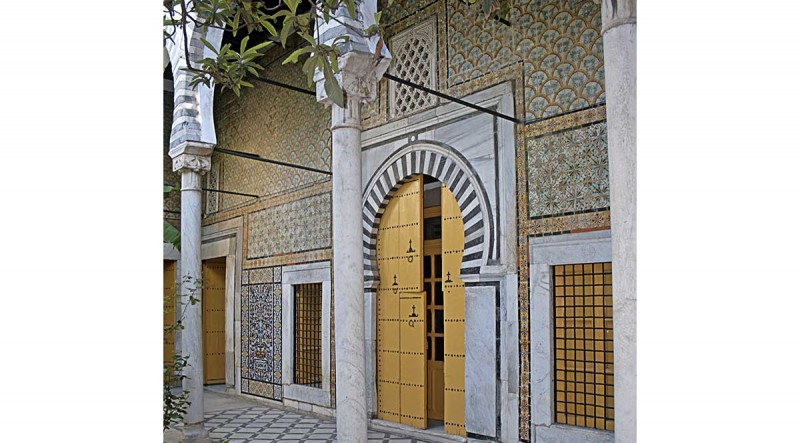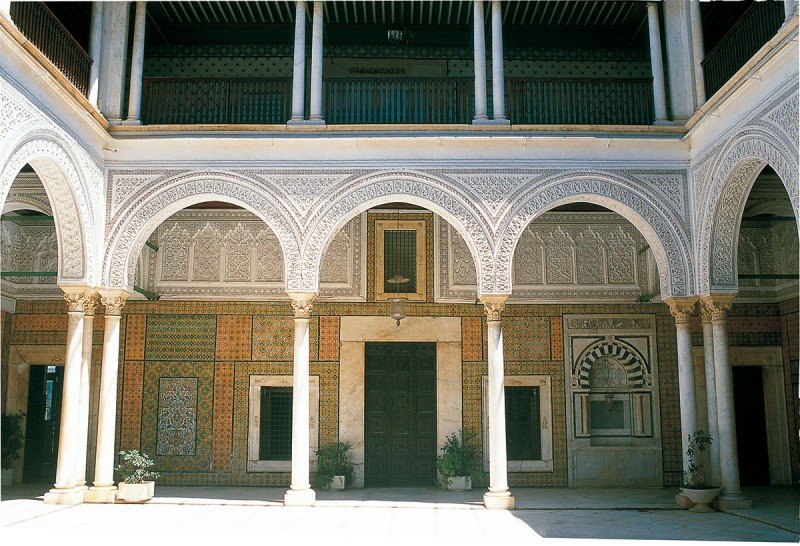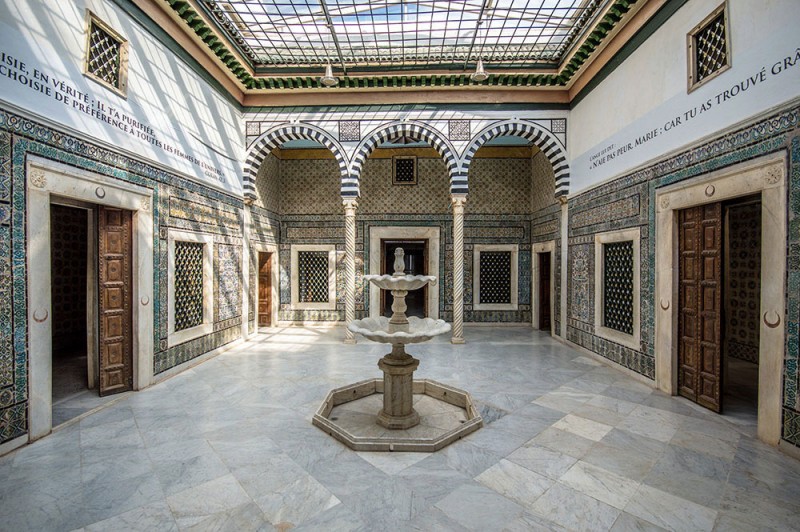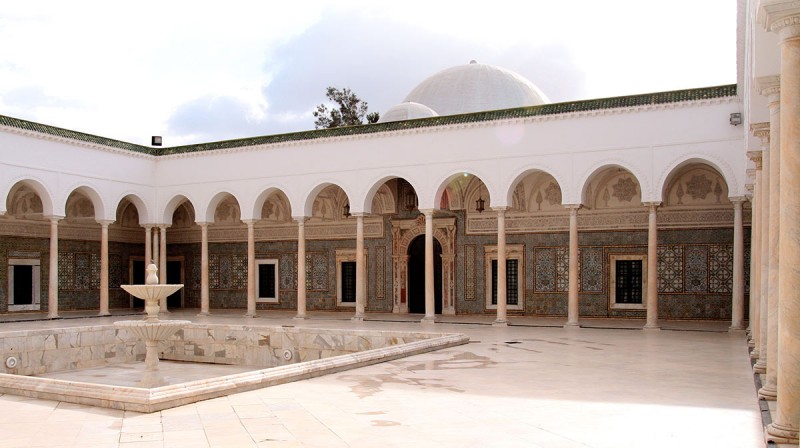Five palaces and beautiful dwellings worth visiting in Tunis and its surroundings.
Dar Othman Built in the early 17th century, this beautiful house in the Tunis medina stands out for the monumental aspect of its outer door, decorated with marble marquetry. Its superbly proportioned patio, surrounded by high arches, strongly reflects Hafsid tradition. The palace was once the residence of Othman Dey, the Turkish ruler who restored the central power after a long period of war.
Dar Husseïn This luxurious dwelling bears the name of the president of Tunis’s first corporation whose meetings were held in the palace. Built in the 18th-19th century, it combines classic Hispano-Maghrebian motifs with a concession to Italian taste. It also has a remarkable ceremonial room occupying two floors. 
Bardo Palace Close to Tunis, this large palace was built and later enlarged by the Husseinid beys (monarchs). The former private apartments house the famous archaeological museum of Bardo. The pretty patio of the “Petit Palais”, complemented by a fountain, reminds of the style of the first palace. The large ceremonial rooms are luxuriously decorated in marble, sculpted stucco and Italian-style paintings whose eclectic and excessive style is characteristic of the taste of the beys in the late 19th century. 
Palais de la Rose Situated in Manouba, this elegant summer residence was constructed by the sovereign Hamouda Pacha at the beginning of the 19th century. Within its vast patio, the beautiful ceramic panels from Tunis or Spain interplay with the polychromatic marble framings, the black and white arches and sculpted plaster of ancient Tunisian tradition. 
Palace of Ennajma Ezzahra Its name means “Star of Venus”. This palace situated in Sidi Bou Saïd is the work of the British subject Baron Rudolphe d’Erlanger, passionately keen on Arab and Tunisian culture, who decided to settle in Tunisia in the 1910s. It is a somewhat mythical place, where sumptuous cosmopolitan receptions used to be held. It contains some marvels of traditional decoration as well as some very personal reinterpretations of Tunisian architecture.
MORE ABOUT TUNIS AND ITS SURROUNDINGS